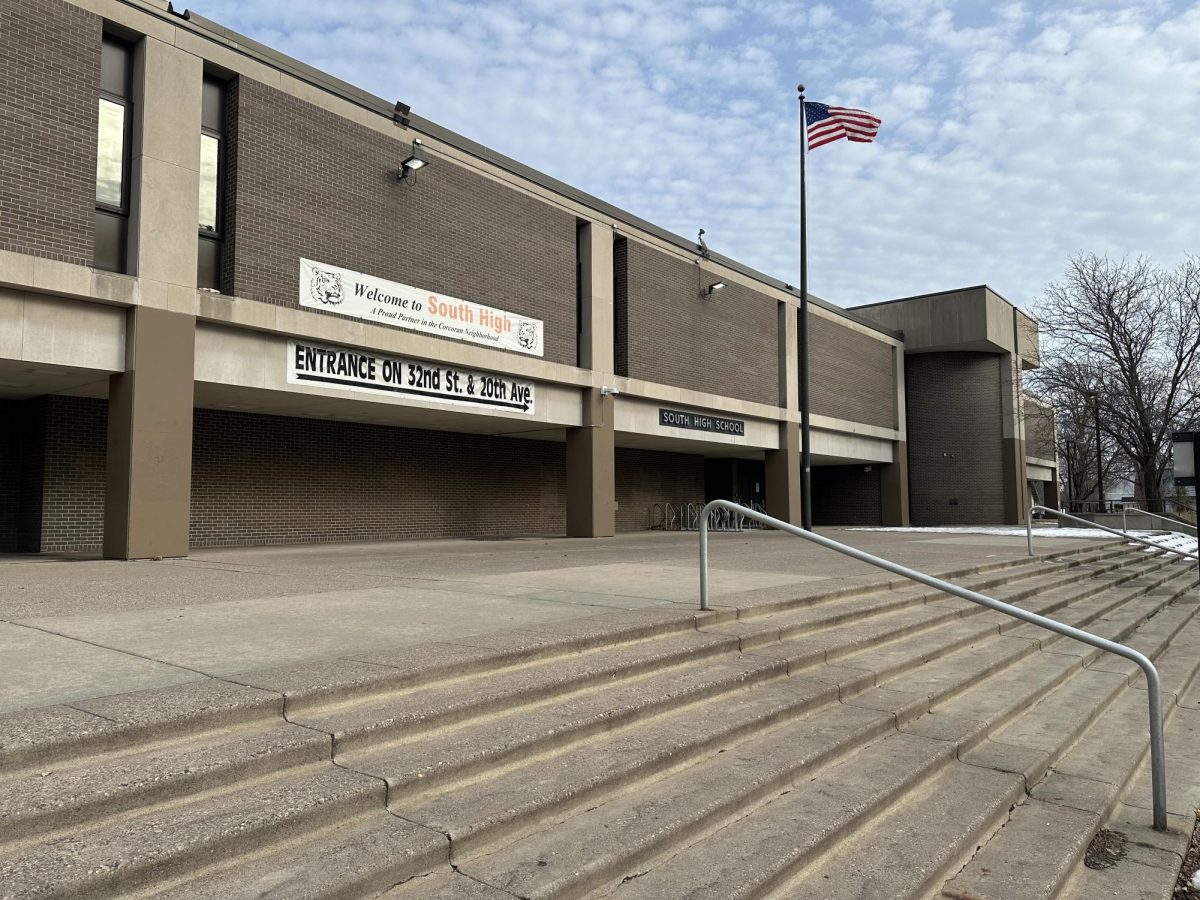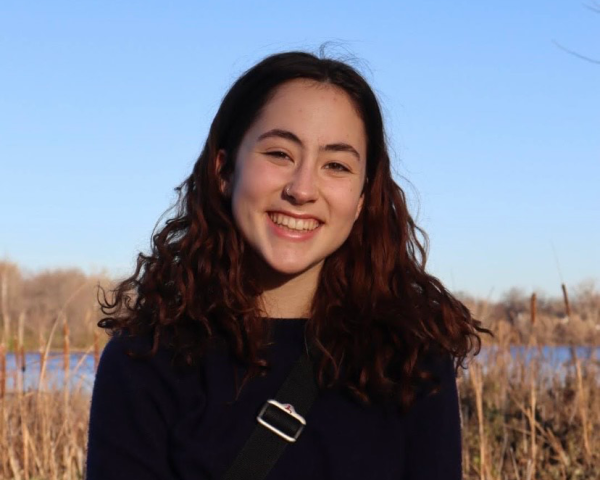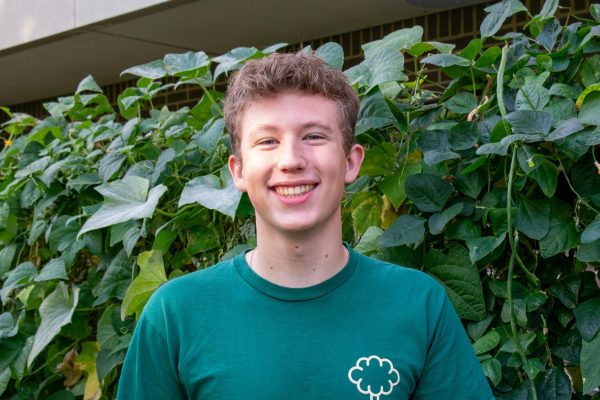Note: This article is a part of the Southerner’s special edition coverage of South’s 2024 budget cuts.
Due to budget cuts reducing the amount of teachers at South by around a third, next year teachers will be taking on one or two more courses than usual, with average class sizes of 35 students. This will not be sustainable. Students at South will not only struggle academically from the lack of individual attention that these increased class sizes will bring, but also socially/emotionally from the instability that will come with the loss of some of South’s most beloved teachers.
Mismanagement from MPS district leaders has time and time again put administrators in positions to make harsh decisions and cuts. Administration is left to prioritize practicality, putting relationships and humanity on the backburner, leaving schools like South constantly adjusting and rebuilding. Since these cuts are based on seniority, the relationships and impact a teacher has made in a school cannot be taken into consideration. For some students, school is the only place where they can count on a reliable, trustworthy adult in their life. Terminating staff who have provided students with such connections will harm their ability to reach their fullest potential. Such severe cuts will take away a lot of connections and trust that the South High community has promoted. “Lots of people in this building have been trying to build a long-term community, we’re thinking about decades down the line, big picture, and now, how much momentum are we losing? How much more are we poisoning the well of public education?” says Naihomi Reyes, an English 10 teacher who will be cut following her 3rd year at South.
The drastic increase in class size that will follow these cuts, invites much concern for teachers and families across the district. One concern, being the lack of individual attention that may come with larger class sizes. Individual attention is important for any student to succeed, but with South having the largest influx of English Language Learner students in the district right now, it’s crucial. Ms. Lund is one of the Sheltered EL teachers who lost her position due to the budget cuts. Sheltered EL classes at South are made up of exclusively English Language Learners (ELL) students, and have bilingual support staff present to help translate.“I get new students all year long, and that definitely affects how I teach because I’m constantly welcoming new students and getting them caught up,” says Lund. The sheltered algebra teacher, Jonathan Krasean, shares his concern about the future of South’s ELL program, being the only full time sheltered teacher who wasn’t cut. “I have to have individual convos with kids. Lecturing to the whole class doesn’t work with the EL crowd, and if the class is huge, of course, there will be kids who aren’t able to learn as much.”
Not being able to form individual relationships and meet the needs of students could also easily lead to an increase in behavior problems at South, which would only exacerbate the stress teachers will be under. Reyes adds, “If the school that we have next year is the school that is being planned for right now, we’re going to have overcrowded classrooms, even more burnt-out teachers, the morale just isn’t going to feel good. We already struggle with attendance, and if the school atmosphere doesn’t feel good, who will want to come to school?”
MPS district officials have displayed the expectation that licensed teachers should be able to adjust and take on any subject. While this may be possible, it requires time and effort from teachers that far exceeds their pay. “Our district’s decisions are made by people that don’t spend time with children, there’s a lot of people who are making a lot more money than I do who never see a kid throughout their day. I recognize that those positions need to exist, but I think they need to be minimal,” says Krasean.
Not only will teachers be challenged with all that comes with larger class sizes, but many teachers who aren’t cut will have to take on courses they don’t usually teach in order to keep their job. For example, as a result of ELL teachers being cut, other teachers already working at South will have to shoulder the responsibility of teaching some of those classes. The shift in positions will affect students’ comfort, especially for those new to the country. It’s already a struggle to feel stable, and a precedent of stability is nearly impossible to set with such dramatic changes in staffing.
These cuts will increase burnout among staff and will ultimately affect the ability teachers will have to run the clubs and programs that are unique and important to South. Our school is built off of inclusive spaces that have fueled creativity, activism and opportunity for generations of students. For example, our All Nations program has provided Native American students with a specialized education that connects them to their heritage and allows them to feel valued at South since 1989. Given the recent influx of immigrants from Central America, South needs more communities like this, but isn’t even receiving enough support from the district to uphold the ones that already exist.
Programs like All Nations, clubs like Black Student Union, and electives like VOICES are all vital to the intersectionality of South. It’s important to offer a diverse catalog of options when students come from so many different backgrounds. Cuts to any of these departments threaten to undermine the expression of cultural diversity that many cherish at South. “It bothers me that a school that is predominately black and brown like South is, and the school that has the largest special ed program, largest influx of ELL students, and the only all nations program in the district is experiencing such deep cuts. South needs more than most, and we’re getting the deepest cuts. It just doesn’t make sense,” says Reyes.
Teachers’ involvement in programs like these aren’t a requirement but a choice. A lot of staff have built these spaces from the ground up to provide a sense of community for their students. Our staff recognizes how important social stimulation is for mental health, and have dedicated their time to developing a school that offers a variety of extracurriculars and electives where students feel included and inspired. Learning in a school where you have opportunities to build strong relationships is more powerful than learning in a school where you feel alone. These connections and outlets foster students’ interests within our school, and without them, students will begin feeling much more apathetic about their education as a whole.
This year, a group of seniors had the opportunity to start a ping pong club working with the art design teacher, Corbin Doty. The club became not only a space to play ping pong, but thanks to Doty, a space to engage in meaningful conversation, while waiting for a turn at the table. His willingness to chaperone this club and stay after school an extra hour quickly extended to a willingness to listen to the students in the club and initiate discussions spanning anywhere from music, to the issues we’re experiencing within our school system. Clubs like this foster relationships and stability. They provide a place to go at the end of your day and learn things about the world that aren’t taught in any classroom. “People like to complain about the lack of windows but I think it’s beautiful in a way. No one can really see in and know all that’s being created here. I know when I walk around and peek into classrooms or ask questions I learn so much from students here and I want to stay at South as long as I possibly can because I’m not done learning”, says Doty.
Budget cuts are nothing new to South. The difference now is the build up influencing their severity. The Comprehensive District Design drastically changed the population coming into South, causing South to lose over 350 freshmen in the past two years. There is no doubt that this redistricting and decrease in enrollment is why South has been struck by budget cuts harsher than ever before. The question is now, how can we maintain what makes South so special? How can we continue to prioritize our electives, programs and powerful relationships despite the uncertainty that lies ahead? “I’ve lived in South Minneapolis my entire life. I’m the 5th continuous generation to attend Minneapolis Public Schools and my kids will be the 6th. I hope that the public schools survive long enough for my grandkids to be the 7th.” says Mr. Doty. It’s evident that South has been able to thrive all these years not because of our district’s investment in us, but because of the deep rooted investment that comes from our teachers and community.



